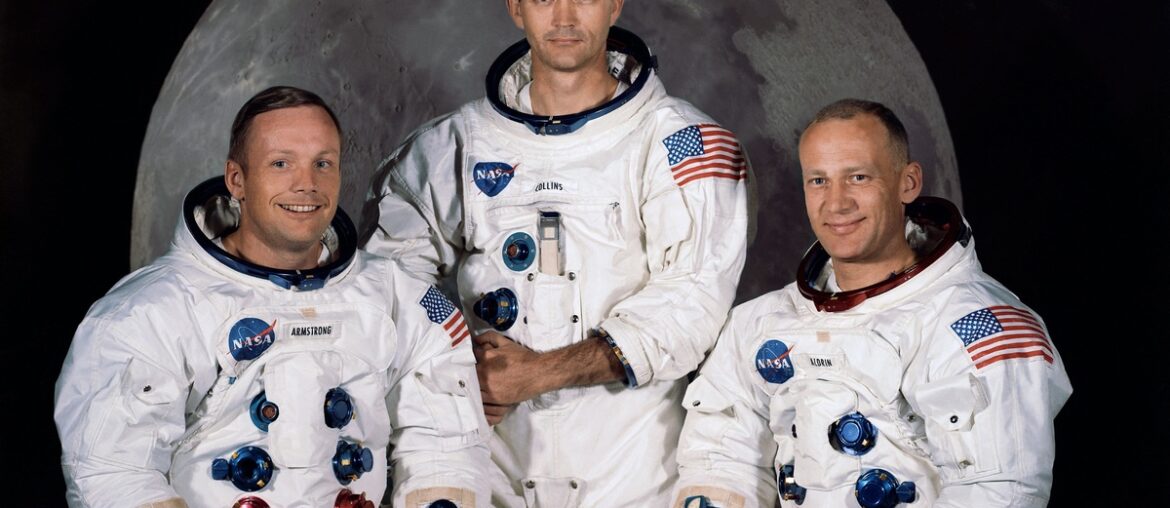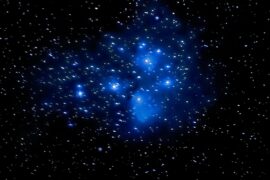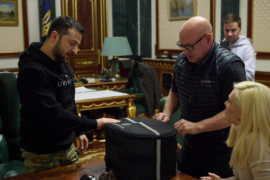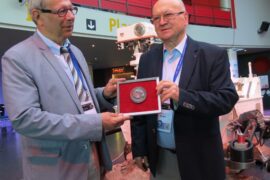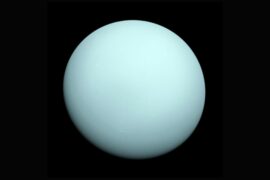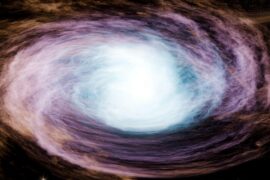From Mission Control in Houston to classrooms and museums across the country, American spacefarers have traced a path from test flights to lunar landings and beyond. Their careers link technology, bravery and public imagination in ways that touch science, culture and history.
There are 58 Famous American Astronauts, ranging from Alan Bean to Wally Schirra. For each, you’ll find below Key missions (years),Role,Notable achievements so you can quickly scan mission dates, duties and landmark accomplishments — you’ll find below.
How did you decide which astronauts to include on this list?
The entries focus on U.S. astronauts with documented, crewed flight experience or widely recognized historical roles, using official NASA records and major mission histories as the primary sources; that keeps the list factual and focused on people who flew or led significant programs.
Where can I get more detailed mission histories and biographies?
For deeper reading, check NASA’s official biographies, mission reports, Johnson Space Center archives and reputable space history sites; the table below also summarizes Key missions (years),Role,Notable achievements so you can jump straight to details.
Famous American Astronauts
| Name | Key missions (years) | Role | Notable achievements |
|---|---|---|---|
| Neil Armstrong | Gemini 8 (1966); Apollo 11 (1969) | Commander | First person to walk on the Moon on July 20, 1969. |
| Buzz Aldrin | Gemini 12 (1966); Apollo 11 (1969) | Lunar Module Pilot | Second person to walk on the Moon, following Neil Armstrong. |
| John Glenn | Friendship 7 (1962); STS-95 (1998) | Pilot; Payload Specialist | First American to orbit the Earth and oldest person in space at age 77. |
| Sally Ride | STS-7 (1983); STS-41-G (1984) | Mission Specialist | First American woman in space, breaking barriers for future female astronauts. |
| Alan Shepard | Freedom 7 (1961); Apollo 14 (1971) | Pilot; Commander | First American in space and fifth person to walk on the Moon. |
| Jim Lovell | Gemini 7 (1965); Gemini 12 (1966); Apollo 8 (1968); Apollo 13 (1970) | Commander | Commanded the dramatic Apollo 13 mission, ensuring his crew’s safe return to Earth. |
| Mae Jemison | STS-47 (1992) | Mission Specialist-Scientist | First African American woman to travel into space, a landmark achievement. |
| Scott Kelly | STS-103 (1999); STS-118 (2007); ISS Expeditions 25/26, 43-46 (2015-2016) | Commander; Flight Engineer | Spent 340 consecutive days in space, providing data for the NASA Twins Study. |
| Peggy Whitson | STS-111 (2002); STS-120 (2007); Axiom Mission 2 (2023) | Commander; Flight Engineer | Holds the U.S. record for most cumulative days in space (675 days). |
| Gus Grissom | Liberty Bell 7 (1961); Gemini 3 (1965) | Pilot; Command Pilot | Second American in space; first person to fly in space twice. |
| Ed White | Gemini 4 (1965) | Pilot | First American to perform a spacewalk (extravehicular activity). |
| Michael Collins | Gemini 10 (1966); Apollo 11 (1969) | Command Module Pilot | Piloted the Apollo 11 command module alone in lunar orbit during the first moonwalk. |
| Gene Cernan | Gemini 9A (1966); Apollo 10 (1969); Apollo 17 (1972) | Commander | The last person to walk on the Moon, leaving humanity’s final footprints. |
| John Young | Gemini 3 (1965); Gemini 10 (1966); Apollo 10 (1969); Apollo 16 (1972); STS-1 (1981); STS-9 (1983) | Commander; Pilot | Only person to fly on Gemini, Apollo, and Space Shuttle programs. |
| Eileen Collins | STS-63 (1995); STS-93 (1999); STS-114 (2005) | Commander; Pilot | First female Space Shuttle Pilot and first female Shuttle Commander. |
| Guion Bluford | STS-8 (1983); STS-61-A (1985); STS-39 (1991); STS-53 (1992) | Mission Specialist | The first African American to travel to space. |
| Christa McAuliffe | STS-51-L (1986) | Payload Specialist | Selected as the first teacher in space, tragically died in the Challenger disaster. |
| Christina Koch | ISS Expeditions 59/60/61 (2019-2020) | Flight Engineer | Set the record for the longest single spaceflight by a woman (328 days). |
| Doug Hurley | STS-127 (2009); STS-135 (2011); Demo-2 (2020) | Commander; Pilot | Commanded the first crewed flight of SpaceX’s Dragon, restoring U.S. launch capability. |
| Bob Behnken | STS-123 (2008); STS-130 (2010); Demo-2 (2020) | Joint Operations Commander | Piloted the historic Demo-2 mission, the first commercial crewed flight to the ISS. |
| Wally Schirra | Sigma 7 (1962); Gemini 6A (1965); Apollo 7 (1968) | Commander; Pilot | Only astronaut to fly in the Mercury, Gemini, and Apollo programs. |
| Frank Borman | Gemini 7 (1965); Apollo 8 (1968) | Commander | Commanded Apollo 8, the first mission to orbit the Moon. |
| Harrison Schmitt | Apollo 17 (1972) | Lunar Module Pilot-Scientist | The only professional geologist to walk on the Moon. |
| Story Musgrave | STS-6 (1983); STS-51-F (1985); STS-33 (1989); STS-44 (1991); STS-61 (1993); STS-80 (1996) | Mission Specialist | One of only two astronauts to fly on six spaceflights. |
| Shannon Lucid | STS-51-G (1985); STS-34 (1989); STS-43 (1991); STS-58 (1993); Mir (1996) | Mission Specialist | Held the women’s space endurance record for over a decade with 188 days. |
| Victor Glover | Crew-1 (2020-2021) | Pilot | First African American to live on the ISS for a long-duration mission. |
| Jessica Meir | ISS Expeditions 61/62 (2019-2020) | Flight Engineer | Participated in the first all-female spacewalk with Christina Koch. |
| Kate Rubins | ISS Expeditions 48/49 (2016); 63/64 (2020-2021) | Flight Engineer | First person to successfully sequence DNA in space. |
| Mark Kelly | STS-108 (2001); STS-121 (2006); STS-124 (2008); STS-134 (2011) | Commander; Pilot | Commanded the final mission of Space Shuttle Endeavour. |
| Jared Isaacman | Inspiration4 (2021); Polaris Dawn (2024) | Commander | Commanded Inspiration4, the first all-civilian mission to orbit the Earth. |
| Pete Conrad | Gemini 5 (1965); Gemini 11 (1966); Apollo 12 (1969); Skylab 2 (1973) | Commander | Third person to walk on the Moon, known for his humor and enthusiasm. |
| Fred Haise | Apollo 13 (1970) | Lunar Module Pilot | Safely returned to Earth aboard the crippled Apollo 13 spacecraft. |
| Kathryn Sullivan | STS-41-G (1984); STS-31 (1990); STS-45 (1992) | Mission Specialist | First American woman to perform a spacewalk. |
| Judith Resnik | STS-41-D (1984); STS-51-L (1986) | Mission Specialist | Second American woman in space; died in the Challenger disaster. |
| Deke Slayton | Apollo-Soyuz Test Project (1975) | Docking Module Pilot | One of the original Mercury Seven, grounded until 1972 due to a heart condition. |
| Scott Carpenter | Aurora 7 (1962) | Pilot | Second American to orbit the Earth, one of the original Mercury Seven. |
| Gordon Cooper | Faith 7 (1963); Gemini 5 (1965) | Pilot; Command Pilot | Last American to fly a solo orbital mission and a Mercury Seven original. |
| Alan Bean | Apollo 12 (1969); Skylab 3 (1973) | Lunar Module Pilot | Fourth person to walk on the Moon; became a renowned space artist after NASA. |
| Edgar Mitchell | Apollo 14 (1971) | Lunar Module Pilot | Sixth person to walk on the Moon, piloting the Antares lunar module. |
| David Scott | Gemini 8 (1966); Apollo 9 (1969); Apollo 15 (1971) | Commander | Seventh person to walk on the Moon; first to drive the Lunar Roving Vehicle. |
| James Irwin | Apollo 15 (1971) | Lunar Module Pilot | Eighth person to walk on the Moon; co-founder of the High Flight Foundation. |
| Charlie Duke | Apollo 16 (1972) | Lunar Module Pilot | Tenth person to walk on the Moon and the youngest, at age 36. |
| Jack Swigert | Apollo 13 (1970) | Command Module Pilot | A last-minute replacement on the harrowing Apollo 13 mission. |
| Ken Mattingly | Apollo 16 (1972); STS-4 (1982); STS-51-C (1985) | Command Module Pilot | Removed from Apollo 13 but later walked in deep space on Apollo 16. |
| Jerry Ross | STS-61-B (1985); STS-27 (1988); STS-37 (1991); STS-55 (1993); STS-74 (1995); STS-88 (1998); STS-110 (2002) | Mission Specialist | One of only two astronauts to fly into space seven times. |
| Franklin Chang Díaz | STS-61-C (1986); STS-34 (1989); STS-46 (1992); STS-60 (1994); STS-75 (1996); STS-91 (1998); STS-111 (2002) | Mission Specialist | Tied for the record of most spaceflights, with seven missions. |
| Sunita Williams | STS-116 (2006); STS-117 (2007); Boeing Starliner-1 (TBD) | Commander; Flight Engineer | Formerly held the records for most spacewalks and spacewalking time by a woman. |
| Robert Crippen | STS-1 (1981); STS-7 (1983); STS-41-C (1984); STS-41-G (1984) | Commander; Pilot | Piloted the very first Space Shuttle mission (STS-1) in 1981. |
| Kalpana Chawla | STS-87 (1997); STS-107 (2003) | Mission Specialist | First woman of Indian origin in space; died in the Columbia disaster. |
| Rick Husband | STS-96 (1999); STS-107 (2003) | Commander | Commanded the final, ill-fated mission of the Space Shuttle Columbia. |
| Michael Hopkins | ISS Expeditions 37/38 (2013); Crew-1 (2020) | Commander | Commanded Crew-1, the first operational flight of a commercial crew vehicle. |
| Raja Chari | Crew-3 (2021-2022) | Commander | Commanded the SpaceX Crew-3 mission and is part of the Artemis astronaut team. |
| Reid Wiseman | ISS Expedition 40/41 (2014); Artemis II (2025 TBD) | Commander | Selected as Commander for Artemis II, the first crewed mission to orbit the Moon since Apollo. |
| Hayley Arceneaux | Inspiration4 (2021) | Chief Medical Officer | Youngest American in space and the first with a prosthetic body part. |
| Charles Bolden Jr. | STS-61-C (1986); STS-31 (1990); STS-45 (1992); STS-60 (1994) | Commander; Pilot | First African American to serve as the Administrator of NASA. |
| Joseph Kerwin | Skylab 2 (1973) | Science Pilot | First physician to fly in space, a crew member on the first Skylab mission. |
| Tom Stafford | Gemini 6A (1965); Gemini 9A (1966); Apollo 10 (1969); Apollo-Soyuz (1975) | Commander | Commanded the historic Apollo-Soyuz mission, the first U.S.-Soviet joint spaceflight. |
| Norman Thagard | STS-7 (1983); STS-51-B (1985); STS-30 (1989); STS-42 (1992); Mir EO-18 (1995) | Cosmonaut Researcher | First American to launch on a Russian Soyuz rocket and live on the Mir space station. |
Images and Descriptions
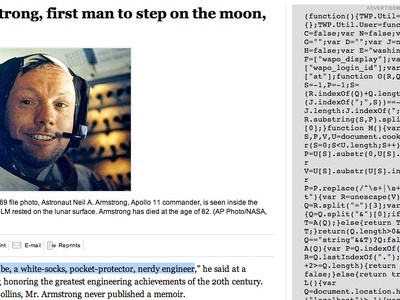
Neil Armstrong
An American icon, his “one small step” on the Moon remains one of humanity’s most profound achievements. Armstrong was a skilled test pilot and a symbol of exploration and courage.
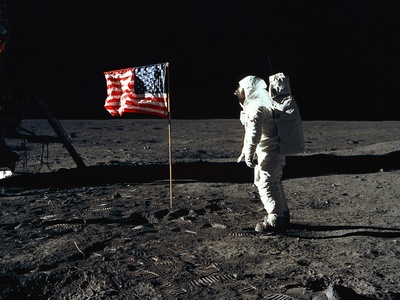
Buzz Aldrin
The Lunar Module Pilot for the historic Apollo 11 mission, Aldrin has since become a prominent author and advocate for human space exploration, keeping the dream of spaceflight alive for new generations.
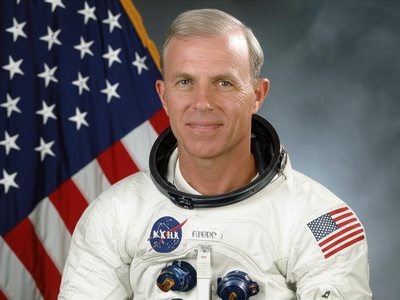
John Glenn
A national hero and one of the original Mercury Seven, Glenn’s 1962 flight restored American confidence in the space race. He later served as a U.S. Senator and returned to space at age 77.
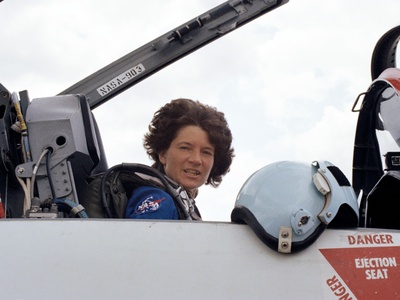
Sally Ride
A physicist and astronaut, Sally Ride shattered the gender barrier in American spaceflight. After leaving NASA, she became a passionate advocate for science education, inspiring young people to pursue STEM careers.
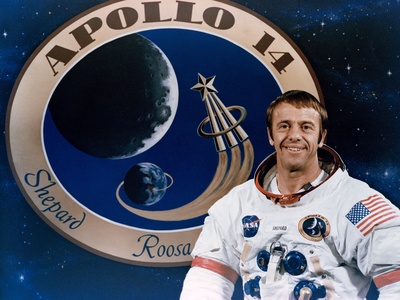
Alan Shepard
A member of the original Mercury Seven, Shepard’s suborbital flight made him a national hero. He later commanded Apollo 14, famously hitting two golf balls on the lunar surface.
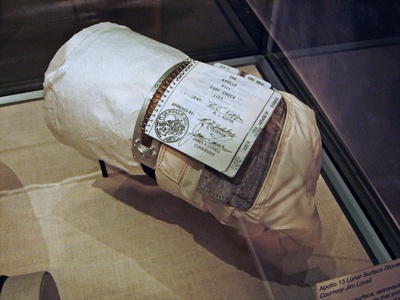
Jim Lovell
Famous for commanding the perilous Apollo 13 mission, Lovell’s calm leadership during the crisis became legendary. He is one of only three people to have flown to the Moon twice.
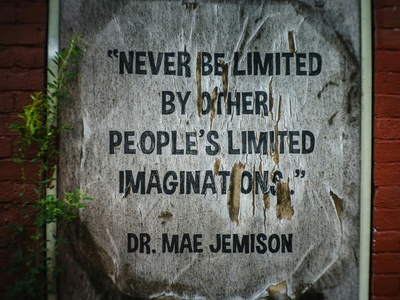
Mae Jemison
A physician and engineer, Jemison’s flight aboard the Space Shuttle Endeavour was a historic milestone. She later founded a technology company and has continued to advocate for science literacy and minority inclusion in STEM.
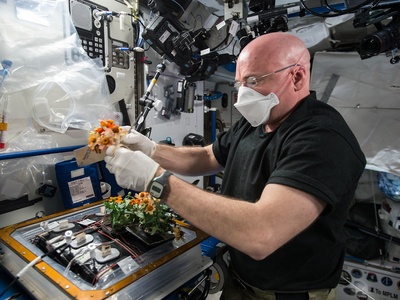
Scott Kelly
Known for his “Year in Space” mission, Kelly provided invaluable data on the long-term effects of spaceflight on the human body. His social media presence from orbit captivated millions on Earth.
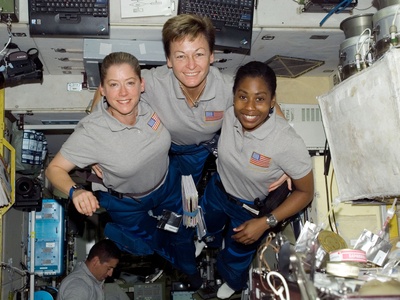
Peggy Whitson
A biochemist and trailblazing astronaut, Whitson was the first female commander of the ISS. Her extensive time in space and numerous records make her one of NASA’s most accomplished astronauts.
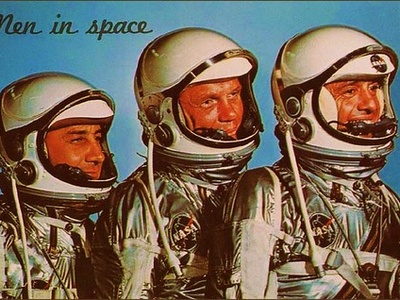
Gus Grissom
A key figure in the early space race, Grissom was one of the original Mercury Seven. He tragically died in the Apollo 1 launchpad fire, a sacrifice that led to major safety improvements.
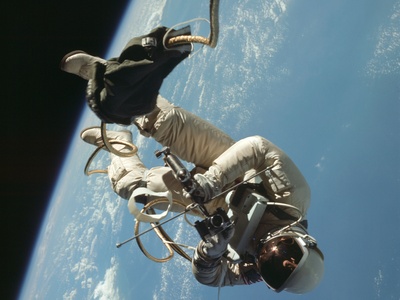
Ed White
During his historic spacewalk, White floated outside his Gemini capsule for 23 minutes. A promising astronaut selected for the first Apollo mission, he tragically died in the Apollo 1 launchpad fire.
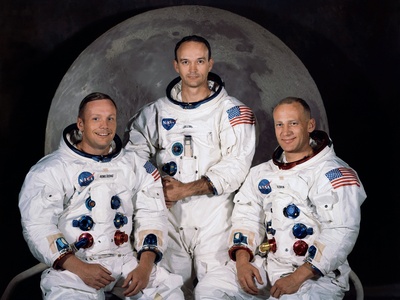
Michael Collins
Often called the “loneliest man in history,” Collins expertly piloted the Columbia command module while his crewmates walked on the Moon. His role was critical to the mission’s success and safe return.
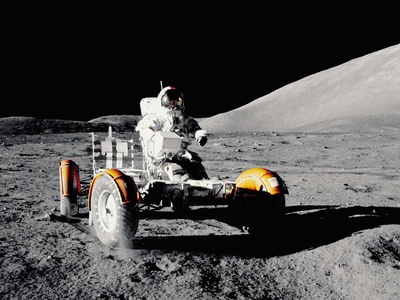
Gene Cernan
As commander of Apollo 17, Cernan’s final words from the Moon were a message of hope for the future. He was a passionate advocate for returning to deep space exploration until his death.
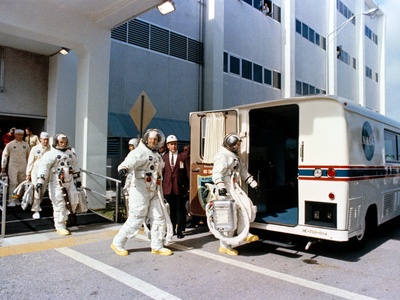
John Young
With a career spanning six missions and three space programs, Young was one of NASA’s most versatile astronauts. He walked on the Moon and commanded the very first Space Shuttle mission.
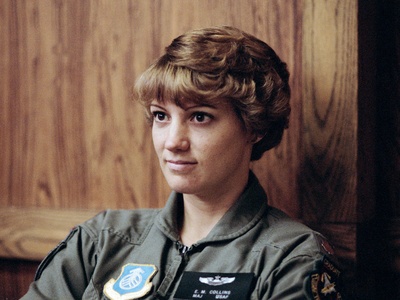
Eileen Collins
A trailblazer for women in aviation, Collins broke major barriers at NASA. She commanded the “Return to Flight” mission after the Columbia disaster, demonstrating remarkable leadership and skill.
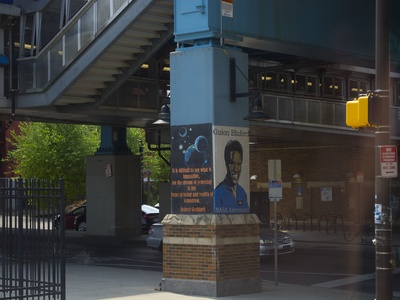
Guion Bluford
An aerospace engineer and decorated Air Force pilot, Bluford’s 1983 flight on the Space Shuttle Challenger was a historic moment for NASA and the nation, paving the way for greater diversity in the astronaut corps.
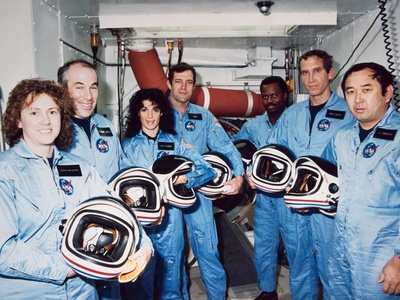
Christa McAuliffe
A high school teacher from New Hampshire, McAuliffe captured the nation’s heart with her goal to teach lessons from space. Her death, along with her crewmates, was a profound national tragedy.
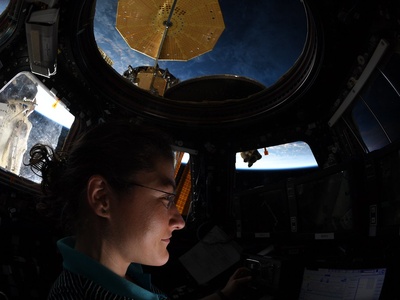
Christina Koch
An electrical engineer, Koch’s record-breaking mission provided critical data for future long-duration flights. She also participated in the first all-female spacewalk, a major milestone for women in space.
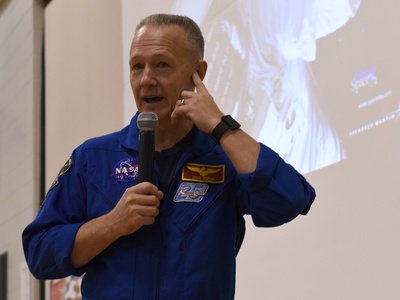
Doug Hurley
A veteran Shuttle pilot, Hurley made history commanding the Demo-2 mission, the first time astronauts launched from American soil since 2011 and a major step in the commercial crew era.
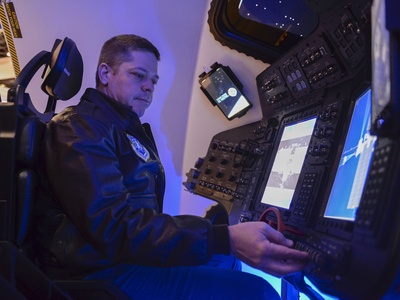
Bob Behnken
An experienced spacewalker and test pilot, Behnken and Doug Hurley’s successful flight marked a new era of public-private partnership for NASA, launching a new chapter in American spaceflight.
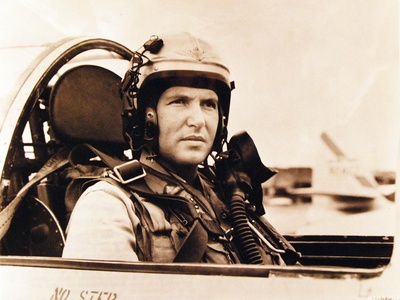
Wally Schirra
A member of the original Mercury Seven, Schirra was known for his steady hand and sense of humor. He commanded the first crewed Apollo mission, a critical test flight for the lunar program.
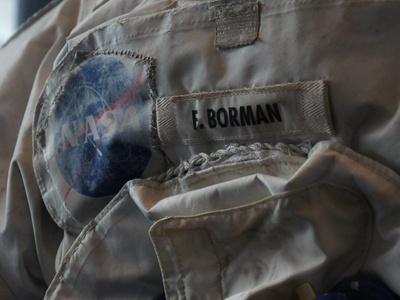
Frank Borman
As commander of the daring Apollo 8 mission, Borman and his crew were the first humans to see the far side of the Moon. Their Christmas Eve broadcast from lunar orbit was a unifying global event.
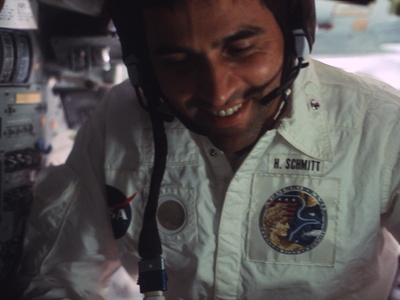
Harrison Schmitt
As the first and only scientist to explore the lunar surface, Schmitt’s expertise on the Apollo 17 mission provided invaluable geological context, greatly enhancing the scientific return of the Apollo program.
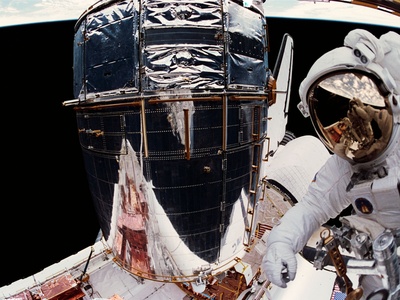
Story Musgrave
A remarkably versatile astronaut with degrees in medicine and computers, Musgrave was a key figure in the Shuttle program. He performed critical spacewalks to repair the Hubble Space Telescope.
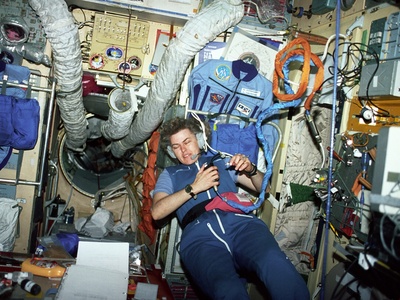
Shannon Lucid
Lucid’s 188-day mission aboard the Russian space station Mir set a new standard for long-duration spaceflight for American astronauts. Her resilience earned her the Congressional Space Medal of Honor.
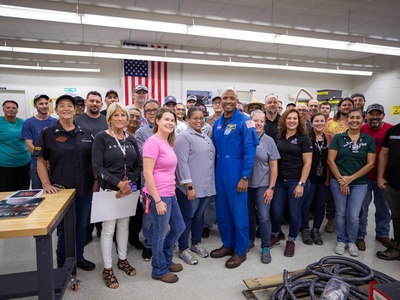
Victor Glover
As pilot of the first operational SpaceX Crew Dragon mission, Glover’s six-month stay aboard the International Space Station was a landmark for representation in long-duration spaceflight.
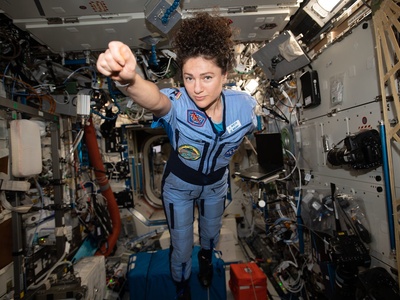
Jessica Meir
A comparative physiologist, Meir’s scientific background was vital to ISS research. Her historic spacewalk in October 2019 was a celebrated milestone for women in STEM and space exploration.
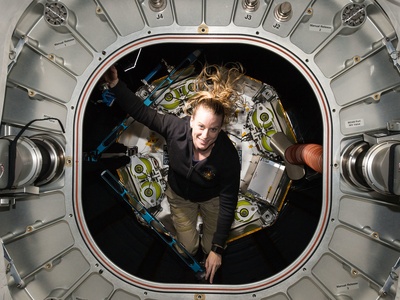
Kate Rubins
A microbiologist, Rubins’ groundbreaking work on the ISS demonstrated the potential for genetic research in microgravity. Her achievements highlight the station’s role as a unique scientific laboratory.
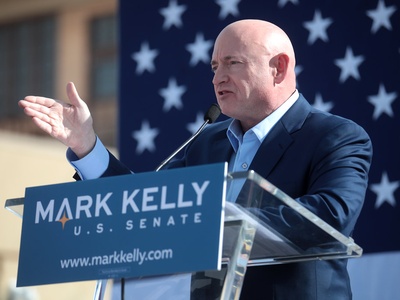
Mark Kelly
The identical twin of astronaut Scott Kelly, Mark had a distinguished career as a naval aviator and Shuttle commander. He later entered politics and was elected as a U.S. Senator for Arizona.

Jared Isaacman
A tech entrepreneur and skilled pilot, Isaacman funded and commanded the historic Inspiration4 mission to raise money for charity. His efforts have helped pioneer the era of commercial human spaceflight for private citizens.
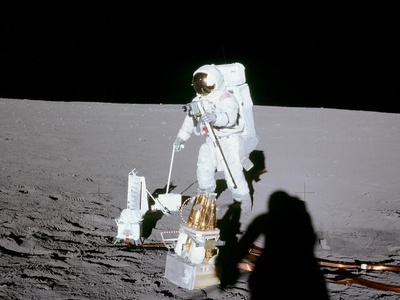
Pete Conrad
As commander of Apollo 12, Conrad’s first words on the Moon were “Whoopee! Man, that may have been a small one for Neil, but that’s a long one for me.” He later commanded the first Skylab mission.
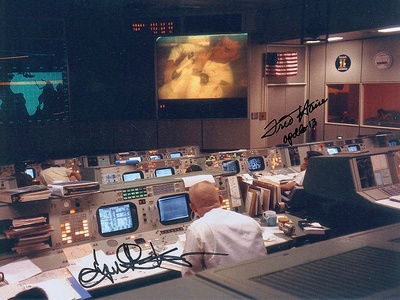
Fred Haise
As the Lunar Module Pilot for the ill-fated Apollo 13 mission, Haise played a critical role in nursing the damaged spacecraft back home. He later flew approach and landing tests for the Space Shuttle.
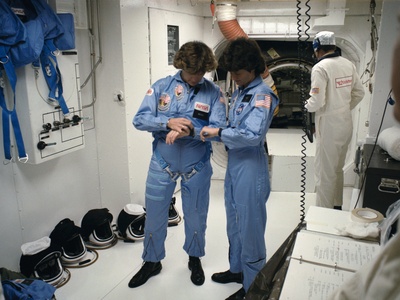
Kathryn Sullivan
A geologist and astronaut, Sullivan made history in 1984 by leaving the Space Shuttle Challenger to perform the first spacewalk by an American woman. She later served as the administrator of NOAA.
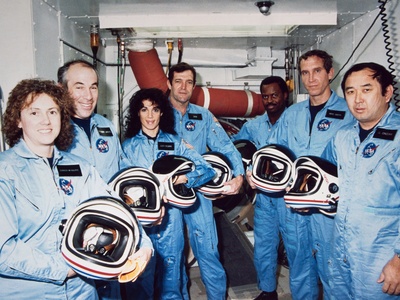
Judith Resnik
An electrical engineer with a Ph.D., Resnik was a brilliant mission specialist. She tragically died alongside her six crewmates when the Space Shuttle Challenger broke apart shortly after launch.
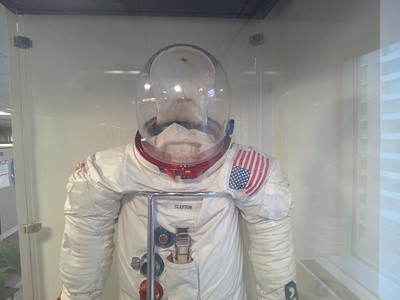
Deke Slayton
After being grounded for medical reasons, Slayton became NASA’s Director of Flight Crew Operations. He was finally cleared to fly and piloted the historic Apollo-Soyuz mission, linking up with a Soviet spacecraft.
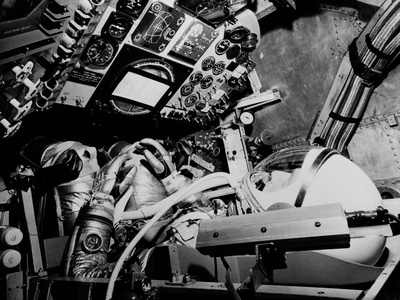
Scott Carpenter
Following John Glenn’s flight, Carpenter circled the Earth three times in his Aurora 7 capsule. A splashdown error left him far from the recovery zone, but he was safely rescued after a tense search.
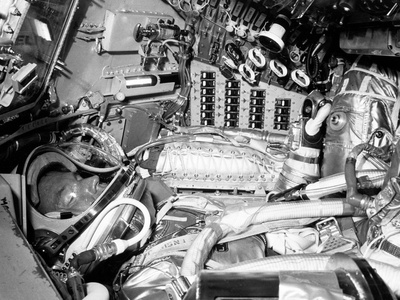
Gordon Cooper
Cooper’s 22-orbit flight in Faith 7 was the final and longest of the Mercury program. He later commanded Gemini 5, an eight-day mission that set a new space endurance record.
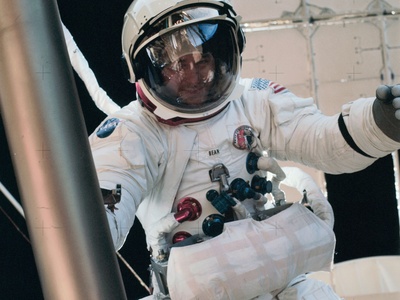
Alan Bean
During Apollo 12, Bean and Pete Conrad made the second lunar landing. After retiring, he dedicated his life to painting, creating a unique collection of artwork inspired by his experiences on the Moon.
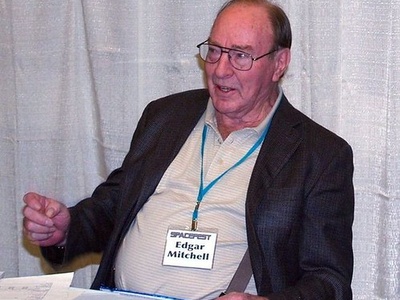
Edgar Mitchell
As the pilot of the Apollo 14 lunar module, Mitchell explored the Fra Mauro formation with Alan Shepard. He later became known for his interest in consciousness and paranormal phenomena.
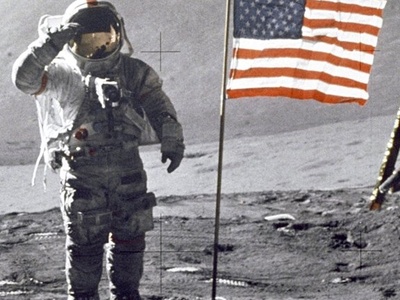
David Scott
As commander of Apollo 15, Scott and his crew conducted extensive scientific exploration of the Hadley Rille. He famously demonstrated Galileo’s theory by dropping a hammer and a feather on the Moon.
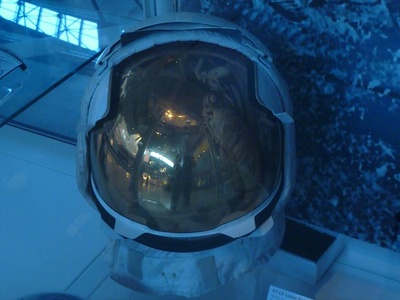
James Irwin
Irwin explored the lunar surface with David Scott during the Apollo 15 mission, one of the most scientifically focused trips to the Moon. His experience in space deepened his Christian faith.
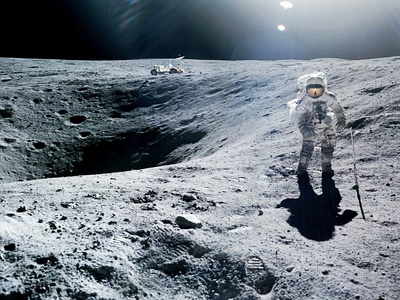
Charlie Duke
Duke served as CAPCOM for Apollo 11 before flying on Apollo 16, where he spent three days exploring the Descartes Highlands. He famously left a photograph of his family on the lunar surface.
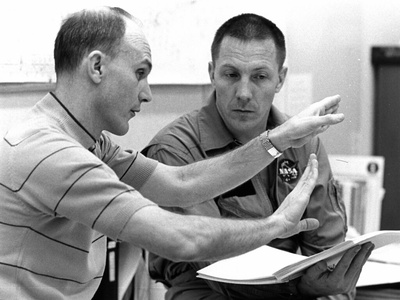
Jack Swigert
Originally a backup, Swigert was assigned to Apollo 13 just days before launch. His famous call, “Houston, we’ve had a problem here,” marked the start of one of NASA’s most dramatic rescue missions.
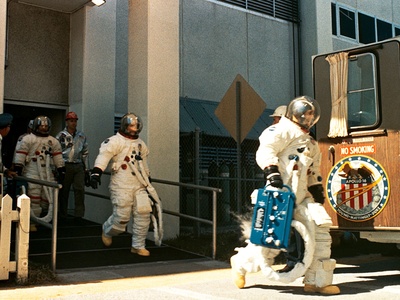
Ken Mattingly
After being grounded from Apollo 13 due to German measles exposure, Mattingly played a key role on the ground to save the crew. He later flew to the Moon on Apollo 16 and commanded two Shuttle missions.
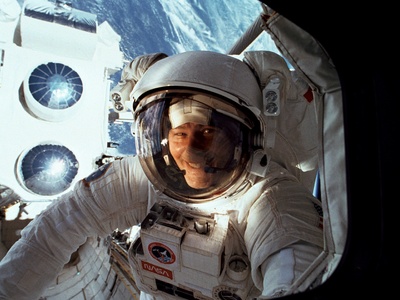
Jerry Ross
A veteran of the Shuttle program, Ross holds the record for most spaceflights. His work was crucial in the assembly of the International Space Station, conducting numerous complex spacewalks.
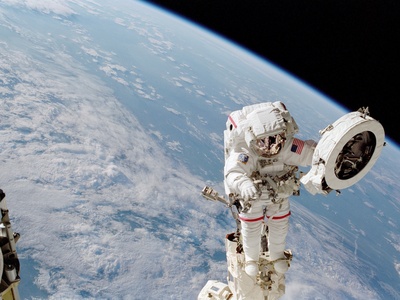
Franklin Chang Díaz
A physicist and pioneer in plasma propulsion, Chang Díaz was the first Hispanic-American astronaut. His extensive career spanned many key scientific and assembly missions on the Space Shuttle.
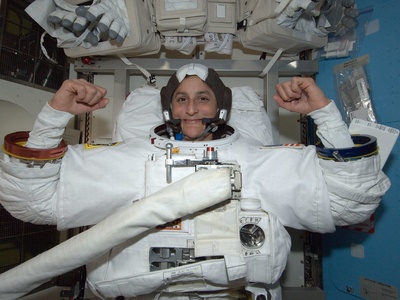
Sunita Williams
A naval aviator and veteran of long-duration ISS missions, Williams is one of NASA’s most experienced astronauts. She has commanded the ISS and is assigned to the first crewed flight of the Boeing Starliner.
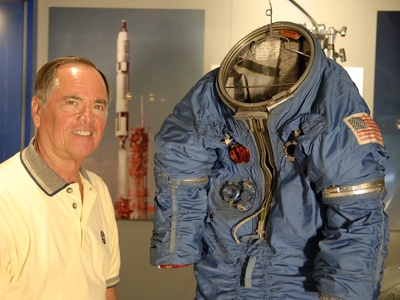
Robert Crippen
As the pilot alongside commander John Young, Crippen flew the most dangerous test flight in history, proving that the revolutionary winged orbiter could launch like a rocket and land like a glider.
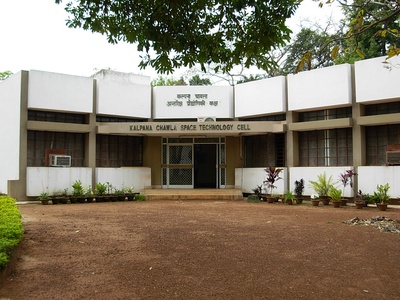
Kalpana Chawla
An accomplished aerospace engineer, Chawla’s career was a source of immense pride in both the U.S. and India. She tragically died with her crewmates during the reentry of Space Shuttle Columbia.
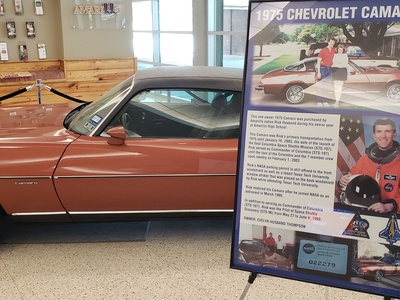
Rick Husband
A decorated Air Force test pilot, Husband commanded the STS-107 science mission. He and his crew were lost when the orbiter disintegrated upon reentry, a tragedy that led to major safety changes.
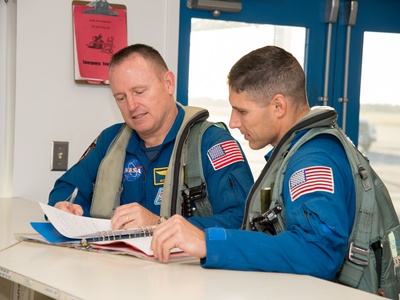
Michael Hopkins
An Air Force officer and flight test engineer, Hopkins commanded the historic Crew-1 mission, which marked the beginning of regular crew rotations to the ISS on SpaceX’s Crew Dragon.
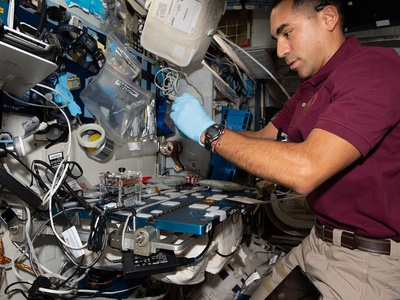
Raja Chari
A distinguished Air Force test pilot, Chari commanded a long-duration science mission on the ISS. He is among the group of astronauts eligible for upcoming missions to the Moon.
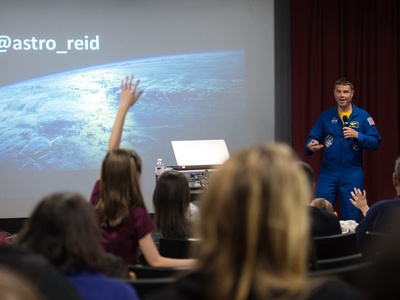
Reid Wiseman
A former naval aviator and ISS veteran, Wiseman will lead the first crew to fly on NASA’s powerful SLS rocket and Orion capsule, paving the way for future lunar landings.
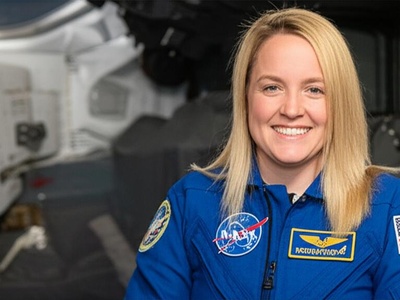
Hayley Arceneaux
A physician assistant and childhood bone cancer survivor, Arceneaux flew on the all-civilian Inspiration4 mission. Her flight was a landmark for inclusivity in space and an inspiration for many.
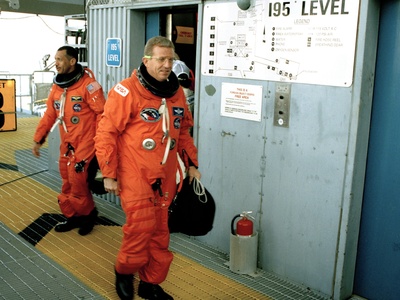
Charles Bolden Jr.
A veteran of four Space Shuttle missions, including the deployment of the Hubble Space Telescope, Bolden later led the entire space agency from 2009 to 2017, overseeing a major transition period.
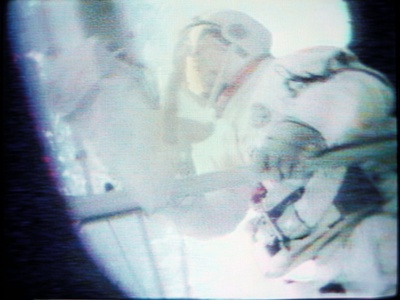
Joseph Kerwin
A U.S. Navy Captain and medical doctor, Kerwin’s expertise was critical on the Skylab 2 mission, which involved repairing the damaged space station and conducting medical experiments.
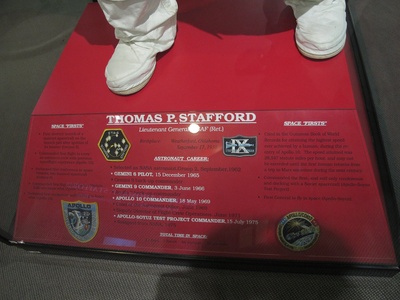
Tom Stafford
A veteran of rendezvous and lunar missions, Stafford’s career culminated in the 1975 Apollo-Soyuz Test Project. The mission’s famous “handshake in space” symbolized a new era of international cooperation.
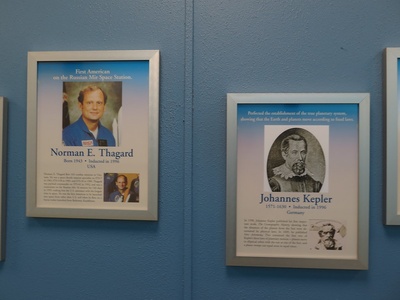
Norman Thagard
A physician and veteran Shuttle astronaut, Thagard’s 115-day stay on Mir in 1995 was a crucial first step in the Shuttle-Mir program, which laid the groundwork for the International Space Station.
Enjoyed this article?
Get daily 10-minute PDFs about astronomy to read before bed!
Sign up for our upcoming micro-learning service where you will learn something new about space and beyond every day while winding down.

